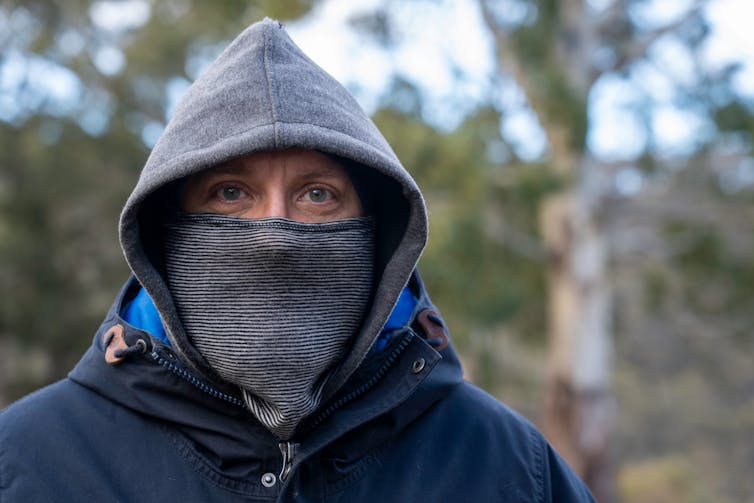

The great face mask debate has been had, and most people agree that it’s a good idea to wear one to prevent the spread of COVID-19. And for as long as we do not have a vaccine, we can foresee that advice from national governments and the World Health Organization to wear one will be in place for some time.
This means we might communicate very differently with each other for months or even years to come. Having a conversation with a mask on can be awkward – it’s often harder to read a mask wearer’s attitudes and emotions, and difficulties faced by deaf people who cannot lipread from a masked talker’s mouth have been well documented.
But we should also remember there’s a third source of potential miscommunication when listening to speech through facewear: the muffling effect masks can have on the sound signal itself. In recent years, our research team of forensic speech scientists has studied the different ways facewear might affect speech clarity. Here’s what we found.
What we needed to know
In a 2013 study, we tested a range of different mouth coverings to compare the effects of speaking while wearing a paper surgical mask to those of speaking while wearing a motorbike helmet, two types of balaclava (one with a mouth hole, the other without), a niqab, a scarf-hoodie combination, and a whole-head rubber mask of the kind occasionally favored by armed robbers.

Eneems/Shutterstock
We focused on the speaker’s articulation of sounds. We theorized that masks might interfere with the motions of the wearer’s mouth: lip movements needed for the “labial” consonants – p, b, w, f, v, m – and the “rounded” vowels that we find in words like sue or saw could be restricted. Freedom to lower the jaw when producing “open” vowels like those in cat or calm might also be more limited.
We then looked at how different types of facewear material might impede the stream of air emanating from the speaker’s mouth during speech. Thicker, less porous fabrics can significantly block the airstream, diminishing the acoustic energy – which includes the loudness of a sound – that is transmitted through the air to the listener’s ear. We measured the “transmission loss” properties of facewear fabrics separately, by placing a loudspeaker and a precisely calibrated microphone on either side of our fabric samples.
Lastly, we needed to consider the mask’s influence on how listeners perceive speech. The combined effect of masks affecting articulation, impeding the airstream, and the sound absorption by fabric was one thing, but at the end of what linguists call the “speech chain” is the listener. We know that even for people who are not deaf or hard of hearing, it helps to see the person who is talking. If we are not blind or partially sighted, we’re all lipreaders, to some extent.
But is masking the speaker’s mouth the same as being unable to see the speaker at all? To test this question, we presented our participants with video footage of masked speakers talking, as well as the audio soundtrack on its own.
What we found
Our results contained some surprises. Of all the different types of facewear we tested, none interfered very much with articulation, and the effects on the airstream seemed mostly quite minor.
Some fabrics absorbed more sound energy than others. Although with surgical masks, portions of the sound frequency spectrum were actually amplified. It’s possible our speakers were unconsciously compensating for the masks they wore by talking more loudly or articulating more carefully, but we don’t know for sure.
We also found that our participants could identify speech sounds more accurately simply by being able to see the video image of the talker, even when the mouth is effectively invisible and no lip or jaw movements could be seen, as in the case of the surgical mask and the eyehole-only balaclava.
The facewear we tested therefore had surprisingly small effects on speech clarity.
The masks people wear during the current pandemic are often homemade from cloth rather than off-the-shelf products. Many are made of multiple layers of thick and stiff fabrics, and may muffle the wearer’s speech more strongly than the garments we tested.
Our research, though it is ongoing, will struggle to keep pace with this explosion in facewear diversity. More than ever before, however, this work will help us to understand any source of potential misunderstandings that stem from wearing masks.
And for now the news is good – if you’re speaking through any sort of facewear, you are likely to be understood.![]()
Dominic Watt, Senior Lecturer in Forensic Speech Science, University of York. This article is republished from The Conversation under a Creative Commons license. Read the original article.









